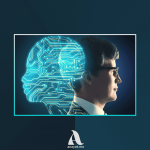The Digital Detox Movement: Balancing Tech and Mental Health
In our hyperconnected world, technology plays a central role in every aspect of our lives. From smartphones and laptops to smartwatches and virtual assistants, our reliance on technology has revolutionized communication, work, and leisure. Yet, as our digital footprints expand, so does the toll on our mental health. This realization has sparked the rise of the digital detox movement, a conscious effort to reclaim balance by disconnecting from technology to focus on mental well-being.
The Impact of Technology on Mental Health
While technology offers immense benefits, such as instant communication and access to information, it can also contribute to stress, anxiety, and burnout. Social media, for instance, often fosters comparison, envy, and feelings of inadequacy. Constant notifications disrupt our focus and exacerbate a sense of urgency, while excessive screen time has been linked to sleep disturbances and reduced productivity.
The addictive nature of apps and devices, designed to capture our attention, can lead to compulsive behaviors. This “always-on” culture makes it difficult to unplug, blurring the boundaries between work and personal life. Over time, these factors can negatively impact mental health, relationships, and overall quality of life.
What is a Digital Detox?
A digital detox involves intentionally reducing or eliminating the use of digital devices for a specified period. The goal is to reconnect with the physical world, reduce stress, and cultivate mindfulness. Digital detoxes can range from brief daily breaks to extended periods without screens, such as a weekend or even a week-long retreat.
Common forms of digital detox include:
- Screen-free mornings or evenings: Avoiding screens at the start or end of the day.
- Social media fasts: Deactivating accounts or uninstalling apps temporarily.
- Technology-free zones: Designating spaces like bedrooms or dining areas as screen-free.
- Structured retreats: Attending workshops or vacations that encourage disconnection.
Benefits of a Digital Detox
Taking a step back from technology can yield numerous benefits:
- Improved Mental Clarity: Reducing digital clutter allows for better focus and decision-making.
- Enhanced Sleep Quality: Avoiding screens before bedtime helps regulate the sleep-wake cycle.
- Strengthened Relationships: Spending device-free time fosters deeper connections with loved ones.
- Reduced Stress: Disconnecting alleviates the pressure of constant notifications and information overload.
- Increased Productivity: Focusing on tasks without distractions boosts efficiency and creativity.
How to Start Your Digital Detox
Embarking on a digital detox doesn’t require drastic measures. Here are practical steps to begin:
- Set Clear Goals: Determine why you want to detox and what you hope to achieve. Is it better sleep? Reduced stress? More quality time with family?
- Start Small: Begin with manageable changes, such as turning off non-essential notifications or limiting social media use to 30 minutes a day.
- Create Boundaries: Define “tech-free” times or spaces in your daily routine.
- Replace Digital Habits: Engage in offline activities like reading, exercising, or pursuing hobbies.
- Communicate Intentions: Let friends, family, and colleagues know about your digital detox to set expectations and gain support.
Embracing Technology Mindfully
A digital detox doesn’t mean abandoning technology entirely; rather, it’s about fostering a healthier relationship with it. Mindful tech use involves:
- Regular Self-Audits: Periodically assess your screen time and online habits.
- Curating Content: Unfollow accounts that drain your energy and subscribe to those that inspire or educate.
- Practicing Digital Minimalism: Use technology purposefully instead of passively consuming content.
The Role of Employers and Organizations
Workplaces can support employees’ mental health by promoting digital detox practices. Encouraging regular breaks, offering mental health resources, and setting boundaries around after-hours communication can make a significant difference. Organizations can also host digital detox challenges or provide access to wellness apps focused on mindfulness and relaxation.
Joining the Digital Detox Movement
The digital detox movement is not about rejecting technology but about using it wisely to enhance, rather than detract from, our lives. By taking intentional breaks, we can protect our mental health, improve relationships, and cultivate a deeper sense of presence.
In an age where being connected is the norm, choosing to unplug can be a revolutionary act of self-care. Start small, stay consistent, and watch as your mental health and overall well-being transform for the better. Remember, balance is the key—embrace technology without letting it define you.




